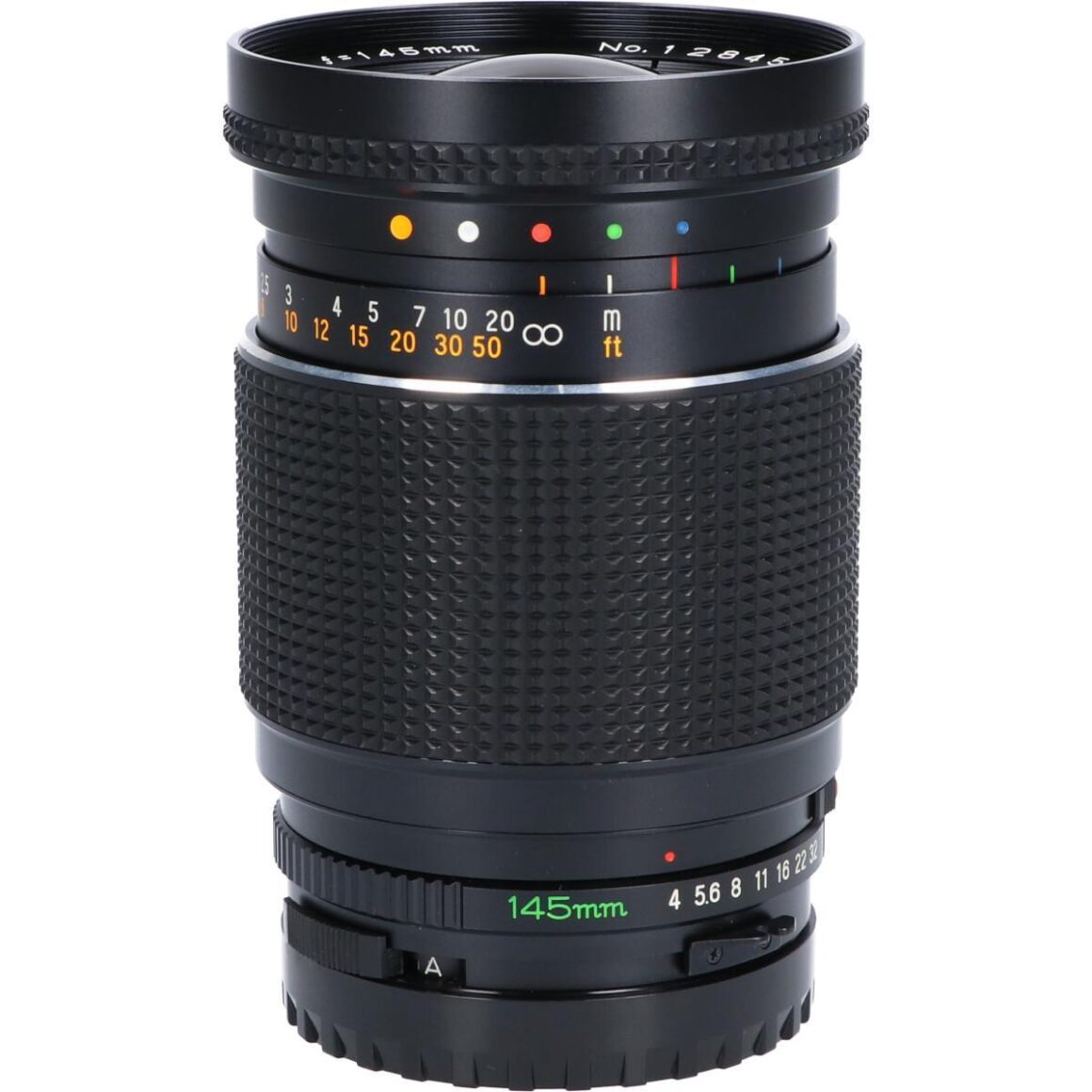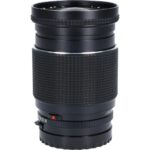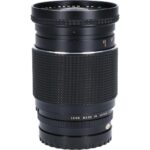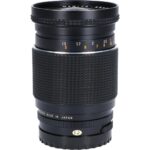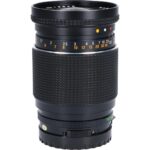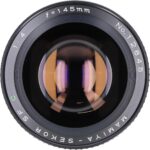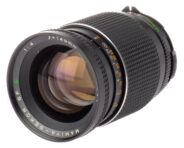Mamiya-Sekor C 145mm F/4 SF
Short telephoto prime lens • Film era • Discontinued
- Announced:
- · No data
- Production status:
- ● Discontinued
- Country of design:
- · Japan
- Original name:
- · MAMIYA-SEKOR SF C 1:4 f=145mm
- Class:
- · Slow 6x4.5 medium-format short telephoto prime lens
- · Professional model (Top class)
- · Soft Focus lens
- System:
- · Mamiya M645 (1975)
Abbreviations
| C | Multi-layer anti-reflection coating is applied to the surfaces of lens elements. This anti-reflection coating increases light transmission, eliminates flare and ghosting, and maintains color consistence among all lens models. |
| SF | The lens features soft focus effect control. |
Specification
| Optical design: | |
| Medium format 6x4.5 | |
| 145mm | |
| F/4 | |
| 7 elements in 5 groups | |
| Mamiya M645 [63mm] | |
| 27° | |
| Diaphragm mechanism: | |
Diaphragm type: | Automatic |
Aperture control: | Aperture ring (Manual settings only) |
| 8 (eight) | |
| Focusing: | |
| 1.50m | |
| 1:7.7 | |
Focusing modes: | Manual focus only |
Manual focus control: | Focusing ring |
| Physical characteristics: | |
| 900g | |
| ⌀81.5×115.5mm | |
| Accessories: | |
| Screw-type 77mm | |
| Screw-type round | |
| Mamiya M645 Teleconverter 2X N → 290mm F/8 |
Sources of data
- Manufacturer's technical data.
- Mamiya-Sekor C interchangeable lenses for Mamiya M645 instructions.
- Mamiya-Sekor C interchangeable lenses for Mamiya M645 Super/ M645 instructions.
- Mamiya interchangeable lenses for Mamiya 645 instructions.
- Mamiya M645 booklet (1982).
- Mamiya M645 booklet (1981).
- Mamiya M645 instructions (II).
- Mamiya M645 1000S instructions.
- Mamiya M645J instructions.
- Mamiya M645J instructions (II).
- Mamiya M645 Super booklet.
- Mamiya 645 Pro booklet.
- Mamiya medium format cameras booklet (PUB. 9012).
- Mamiya medium format cameras booklet (PUB. 9022).
Manufacturer description #1
Fashion and portraiture situations are easier to handle thanks to the convenient Softness Control collar on this versatile lens. Pull back on the collar to automatically stop down to f/8 for focusing; release it and you preview soft-focus composition. Up to 65 different softness values may be obtained.
The lens hood for the 145mm SFC lens can also be used with the 127mm lens for the RB67.
Manufacturer description #2
This soft focus lens is of the highest quality and uses a unique mechamsm for controlling the degree of softness and focusing. Designed especially to provide superb modeling, extremely important in a soft-focus lens, the effect produced by this lens is ideal with a sharp center surrounded by a soft halo.
Rotating the Softness Control Ring moves lens groups 1 and 5 symmetrically to continuously vary the degree of softness which is produced by a special type of spherical aberration.
All other forms of aberration have been fully corrected; therefore, when the lens is set for the least degree of soft-focus effect and stoppad down to f/8, extremely sharp, high contrast photographs can be obtained as with an ordinary 145mm lens. Color balance is also outstanding due to careful selection of optical glass and multi-coating.
Adjustment of the Soft-Focus Effect:
1. Softness Control Ring
There are five circles of different colors on the Softness Control Ring. The sizes of these colored circles indicate the degree of softness produced at that setting. The soft-focus effect is maximum when the largest circle (orange) is set at the red index mark in the center. And the effect is minimum when the smallest circle (blue) is set at the index mark. The degree of softness can also be varied continuously by setting anyplace between the circles.
2. Aperture Ring
The degree of softness is also affected by changing the aperture. The soft-focus effect is maximum at f/4 and decreases as the lens is stopped down. Intermediate aperture settings can also be used. When the smallest circle (blue) is set at the index mark, the soft-focus effect completely disappears at f/8 or smaller apertures.
The soft-focus effect can be varied continuously over a wide range by combining the Softness Control Ring and Aperture Ring settings.
Frequently asked questions
What is a Soft Focus effect and what are its benefits?
Spherical aberration has been purposely introduced into this lens to produce photographic images that are sharp yet which have an alluring softness.
Because of the ethereal glow that can be achieved by using Soft Focus, the lens is ideal for creating scenes with a dreamy feel. It is also good for masking blemishes in portrait photography, leaving the model's skin looking flawless.
The effect of Soft Focus is a complex phenomenon that depends on focusing distance, distance to background, relative aperture etc. It is not the same as an out-of-focus image, and cannot be achieved simply by defocusing a common lens.
The effect can be approximated in post-processing but it is not as trivial as just applying a blur filter over the image.
Other short telephoto prime lenses in the Mamiya M645 system
| ■Mamiya M645 mount (10) | |||||||||
| Mamiya-Sekor C 110mm F/2.8 N | A | 5 - 5 | 1.20m | ⌀58 | ● | ||||
| Mamiya-Sekor C 110mm F/2.8 | A | 5 - 5 | 1.20m | ⌀58 | 1976 ● | ||||
| Mamiya-Sekor C 150mm F/4 | A | 5 - 4 | 1.50m | ⌀58 | 1975 ● | ||||
| Mamiya A 150mm F/3.8 N/L | A | 5 - 5 | 1.50m | ⌀67 | 1992 ● | ||||
| Mamiya-Sekor C 150mm F/3.5 N | A | 5 - 5 | 1.50m | ⌀58 | ● | ||||
| Mamiya-Sekor C 150mm F/3.5 | A | 5 - 5 | 1.50m | ⌀58 | 1981 ● | ||||
| Mamiya A 150mm F/2.8 | A | 6 - 4 | 1.50m | ⌀67 | 1996 ● | ||||
| Mamiya A 200mm F/2.8 APO | A | 7 - 5 | 2.50m | ⌀77 | 1996 ● | ||||
| Mamiya-Sekor C 210mm F/4 N | A | 5 - 4 | 2.50m | ⌀58 | ● | ||||
| Mamiya-Sekor C 210mm F/4 | A | 5 - 4 | 2.50m | ⌀58 | 1975 ● | ||||
